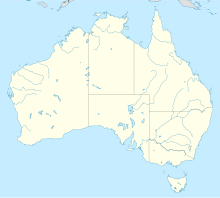Mount Isa Mines
| Location | |
|---|---|
| Location | Mount Isa |
| State | Queensland |
| Country | Australia |
| Coordinates | 20°42′58″S 139°28′34″E / 20.71611°S 139.47611°ECoordinates: 20°42′58″S 139°28′34″E / 20.71611°S 139.47611°E |
| Production | |
| Products |
Copper Zinc Lead Silver |
| History | |
| Opened | 1924 |
| Owner | |
| Company | Glencore |
| Website | www |
Mount Isa Mines Limited ("MIM") operates the Mount Isa copper, lead, zinc and silver mines near Mount Isa, Queensland, Australia as part of the Glencore group of companies. For a brief period in 1980, MIM was Australia's largest company. It has pioneered several significant mining industry innovations, including the Isa Process copper refining technology, the Isasmelt smelting technology, and the IsaMill fine grinding technology, and it also commercialized the Jameson Cell column flotation technology.
In 1923 the orebody containing lead, zinc and silver was discovered by the miner John Campbell Miles. Mount Isa Mines Limited was one of three companies founded in 1924 to develop the minerals discovered by Miles, but production did not begin until May 1931. The other two companies were Mount Isa Silver Lead Proprietary and Mount Isa South. These were both acquired by MIM by late 1925.
The early years were characterized by the struggle to develop the lead–zinc ore bodies, including the need to finance drilling, metallurgical test work and shaft sinking, and there was significant doubt that Miles' discovery would ever amount to much. However, by the end of 1928, the drilling had allowed an estimate of reserves of 21.2 million tons, which were at the time the largest in Australian history, and rose to an estimate of 32 million tons in 1930.
The cost of developing the Mount Isa ore body was so high that the owners had to turn to ASARCO to obtain sufficient finance to bring the operation into production. The project was running behind schedule and over budget, which ultimately resulted in ASARCO sending its own man, Julius Kruttschnitt II, to take charge. Kruttschnitt arrived in 1930 to find that bills were going unpaid because there was no money to pay them, the shafts were flooding, and the construction of the surface plants was months behind schedule.
...
Wikipedia

